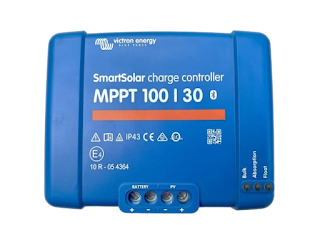The Dark Side of the Solar Market: Exposing Overrated Solar Panels and Fraud
Introduction:
The global push for renewable energy has accelerated the demand for solar panels, a key player in the shift toward clean energy. Unfortunately, alongside this surge, dishonest practices have emerged in the solar industry. One of the most significant issues today is the sale of overrated or falsely labeled solar panels. This blog sheds light on how to identify fraudulent solar panels, drawing from my personal experience. We'll also explore practical ways to avoid falling victim to this widespread scam.
Case Study: My Experience with Overrated Solar Panels
Recently, I purchased six used solar panels, each rated at 250 watts. However, upon closer inspection, I noticed clear signs of label tampering. Four of the panels had residual adhesive from older labels, and two others had new labels entirely covering old ones. Suspecting foul play, I peeled back the new labels, only to find that the actual rating was 175 watts, not the advertised 250 watts.
This discovery wasn’t just disheartening; it was a harsh wake-up call about the prevalence of label fraud in the solar market.


Uncovering the Fraud: Electrical Tests
To further investigate, I conducted electrical tests on two of the panels under varying sunlight conditions. The results were telling:
- Panel 1
- Open Circuit Voltage (Voc): 40V
- Short Circuit Current (Isc): 5A
- Panel 2:
- Voc: 39.3V
- Isc: 5.09A
These values are more in line with a 175W panel, confirming my suspicions of fraud. To get a more accurate picture, we estimate the power using typical values for Voltage at Maximum Power (Vmp) and Current at Maximum Power (Imp)
Calculating Actual Power Output:
To estimate the real power output of the panels, we use the formula:
P = Vmp x Imp
Since we only measured Voc and Isc, we approximate Vmp as 80% of Voc and Imp as 95% of Isc, which are standard industry practices.
Panel 1:
Vmp = 40V x 0.80 = 32V
Imp} = 5A x 0.95 = 4.75A
P = 32V x 4.75A = 152W
Panel 2:
Vmp= 39.3V x 0.80 = 31.44V
Imp = 5.09A x 0.95 = 4.83A
P = 31.44V x 4.83A = 151.85W
Both panels are performing around 152W, far below the claimed 250W but consistent with the original 175W rating. This confirms the labels had been altered to deceive buyers.
Picture 2: Image of the voltmeter readings during the electrical test for Panel 1.
Picture 3: Image of the voltmeter readings during the electrical test for Panel 2.
How to Uncover Solar Panel Fraud
1. Inspect the Labeling:
- Look for signs of tampering such as leftover adhesive, inconsistent label design, or any visible signs that the label has been replaced.
- Compare the label with standard specifications. A panel marked as 250W should have characteristics consistent with that rating.
2. Measure the Dimensions and Weight:
- Different wattages come in specific dimensions. For instance, a 250W panel typically measures around 1.65m x 0.99m, while a 175W panel will be smaller. Always compare the dimensions against standard sizes for the stated wattage. The dimension of the panels in question is 1580mm x 808mm which implies that the area is 1.277meter square which is way less than the average area (1.642meter-sqaure ) of a standard 250W panel.
- Weight is also an indicator. Heavier panels often signify higher wattage due to the extra cells or thicker materials. If the panel seems light for its rating, it could be overrated. The average weight of the solar panels in question is 16kg. While the average weight of a standard 250W solar panels is 18.34kg.
Picture 5: Comparison of the weight of a genuine 250W panel vs. the 175W panels in question. That's my context, in your own case, compare the solar panels offered to you with standard panels (produced by reputable companies) of same capacity.
3. Conduct Electrical Tests:
- Measure the Open Circuit Voltage (Voc) and Short Circuit Current (Isc) using a multimeter. Compare these values to typical ratings for panels of the claimed wattage.
- For a 250W panel, typical values would be a Voc of 37-42V and an Isc of 6-8A under full sunlight. If the readings fall significantly below these values, it could indicate a lower wattage than advertised. Therefore Do your own research
4. Examine the Solar Cells:
- Inspect the quality and arrangement of the solar cells. Low-quality or poorly arranged cells often indicate the panel will not produce the advertised output.
Additional Methods for Detecting Fraudulent Panels:
- Thermal Imaging: Detect hotspots that suggest poor performance or faulty cells.
- Flash Testing: Conducted under controlled conditions, this method can determine the actual output power of a panel, revealing any discrepancies with the label.
Proposed Solutions to the Overrated Panel Issue
1. Certified Testing: Always purchase from reputable sellers who provide certified testing documentation for their panels.
2. Request Manufacturer Documentation: Ask for datasheets and serial numbers directly from the manufacturer to verify the panel’s authenticity.
3. In-Depth Reviews: Before making a purchase, research reviews and testimonials to ensure the seller or product is legitimate.
4. Avoid Used Panels Without Warranty: Buying used panels can be risky, especially if warranties are void. Ensure the panels are properly tested before purchase.
Conclusion:
My experience highlights the need for vigilance when purchasing solar panels. By performing simple inspections and electrical tests, you can avoid falling victim to scams involving overrated or mislabeled panels. As the solar industry grows, it's crucial that both consumers and manufacturers work together to uphold honesty and transparency in the market.
YouTube Video : Embed my YouTube video (click) explaining the label tampering and electrical test process.








Comments
Post a Comment